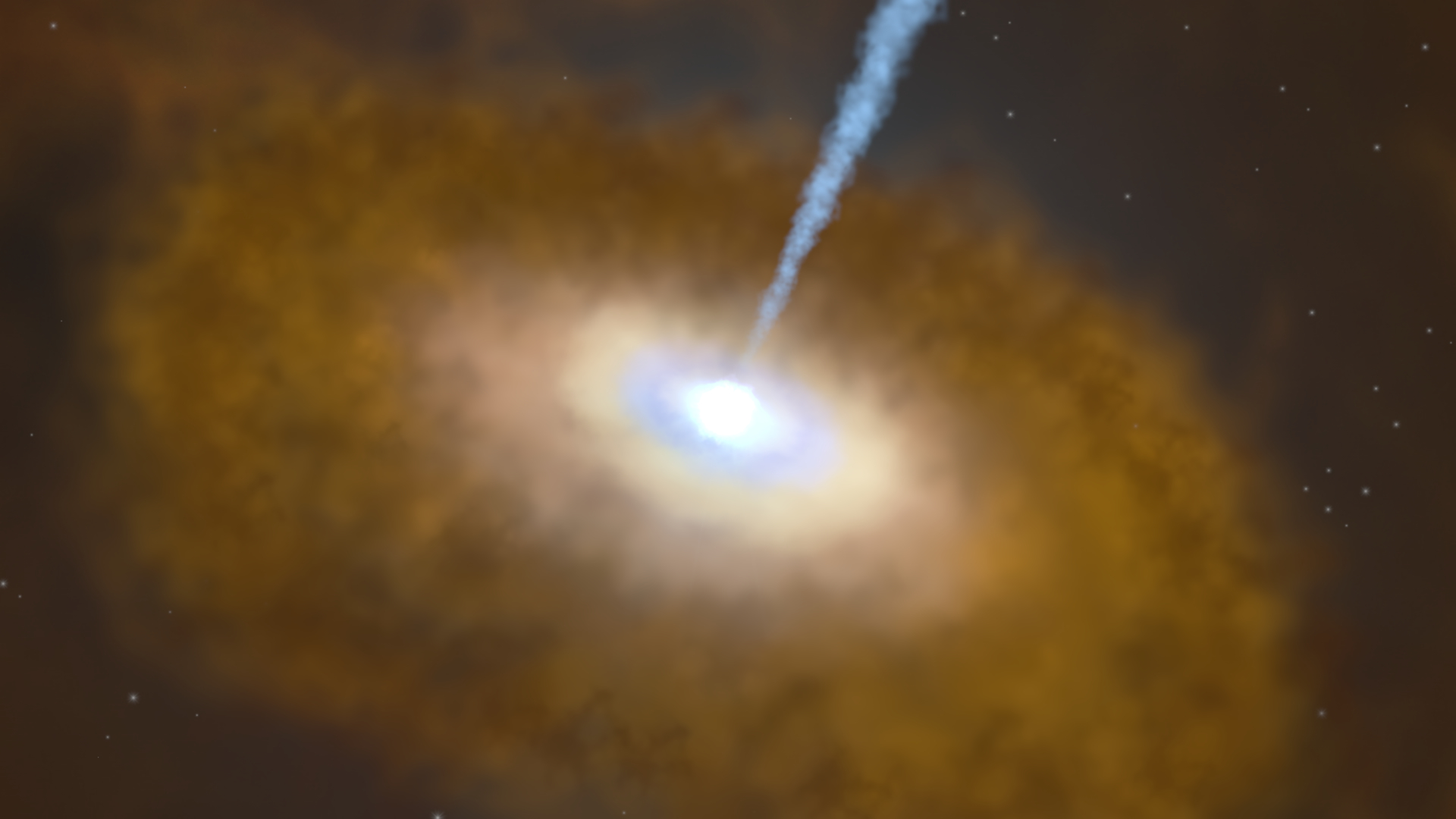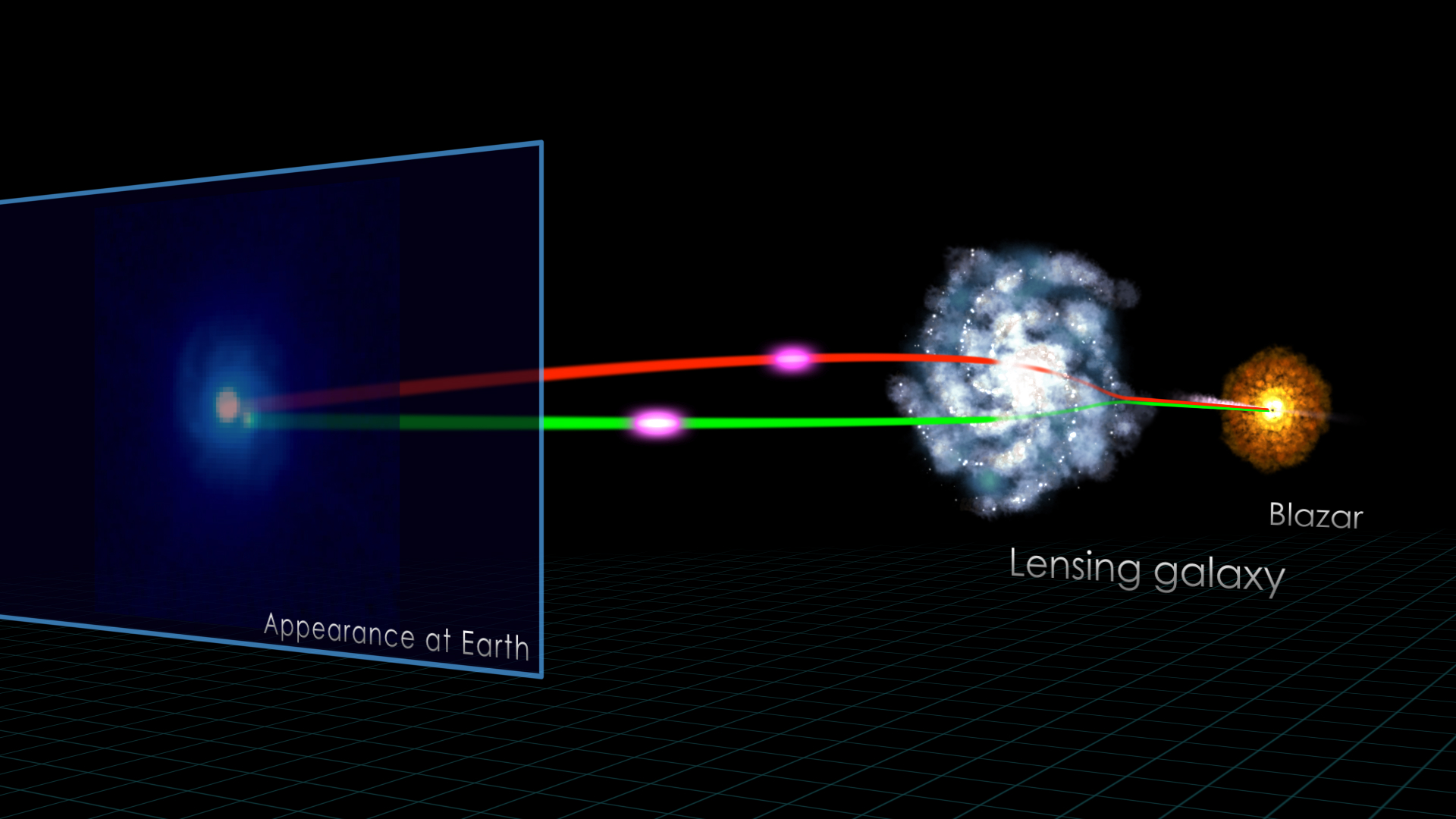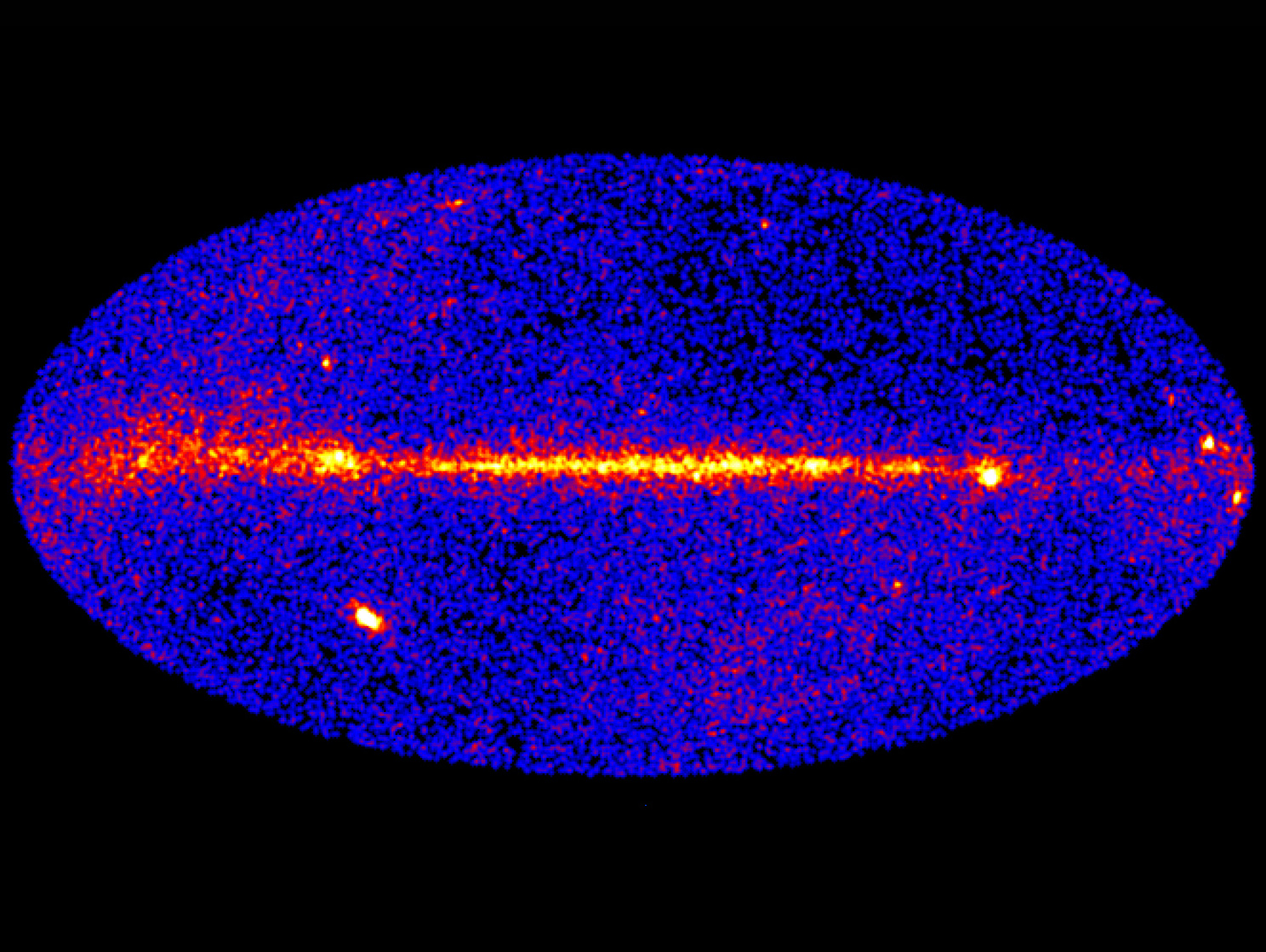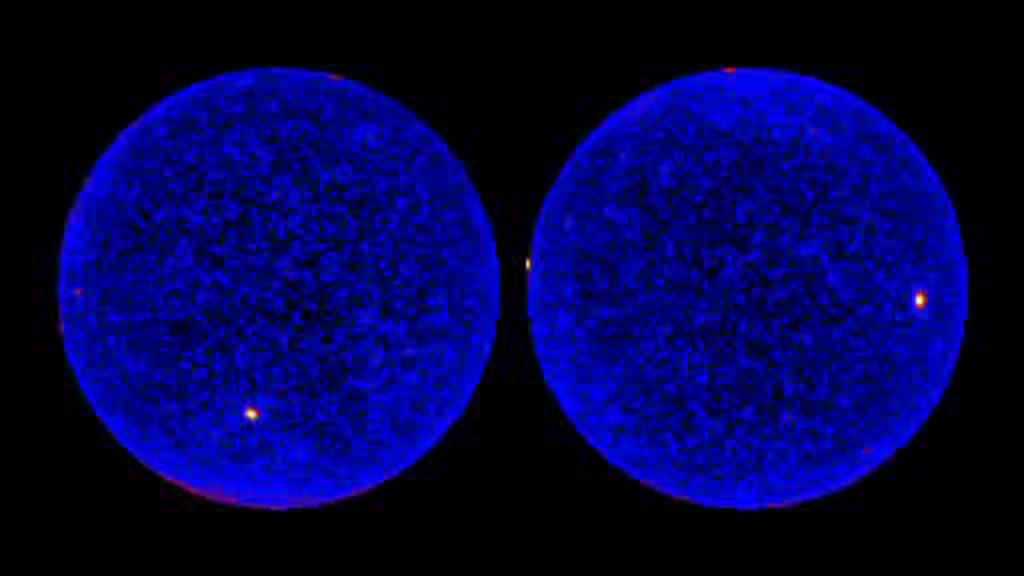Fermi's Latest Gamma-ray Census Highlights Cosmic Mysteries
Every three hours, NASA's Fermi Gamma-ray Space Telescope scans the entire sky and deepens its portrait of the high-energy universe. Every year, the satellite's scientists reanalyze all of the data it has collected, exploiting updated analysis methods to tease out new sources. These relatively steady sources are in addition to the numerous transient events Fermi detects, such as gamma-ray bursts in the distant universe and flares from the sun.
Earlier this year, the Fermi team released its second catalog of sources detected by the satellite's Large Area Telescope (LAT), producing an inventory of 1,873 objects shining with the highest-energy form of light. More than half of these sources are active galaxies whose supermassive black hole centers are causing the gamma-ray emissions.
Active galaxies called blazars make up the largest class of objects detected by Fermi's Large Area Telescope (LAT). Massive black holes in the hearts of these galaxies fire particle jets in our direction. Fermi team member Elizabeth Hays narrates this quick tour of blazars, which includes LAT movies showing how rapidly their emissions can change. Credit: NASA/Goddard Space Flight Center/CI Lab
Watch this video on the NASAexplorer YouTube channel.
For complete transcript, click here.

This all-sky image, constructed from two years of observations by NASA's Fermi Gamma-ray Space Telescope, shows how the sky appears at energies greater than 1 billion electron volts (1 GeV). Brighter colors indicate brighter gamma-ray sources. For comparison, the energy of visible light is between 2 and 3 electron volts. A diffuse glow fills the sky and is brightest along the plane of our galaxy (middle). Discrete gamma-ray sources include pulsars and supernova remnants within our galaxy as well as distant galaxies powered by supermassive black holes.
Credit: NASA/DOE/Fermi LAT Collaboration

This all-sky image, constructed from two years of observations by NASA's Fermi Gamma-ray Space Telescope, shows how the sky appears at energies greater than 1 billion electron volts (1 GeV). Brighter colors indicate brighter gamma-ray sources. For comparison, the energy of visible light is between 2 and 3 electron volts. A diffuse glow fills the sky and is brightest along the plane of our galaxy (middle). Discrete gamma-ray sources include pulsars and supernova remnants within our galaxy as well as distant galaxies powered by supermassive black holes. UNLABELED.
Credit: NASA/DOE/Fermi LAT Collaboration

Poster of the gamma-ray sky as seen through two-years of LAT observations. See the bottom of the page for a PDF version.

Active galaxies called blazars constitute the single largest source class in the second Fermi LAT catalog, but nearly a third of the sources are unassociated with objects at any other wavelength. Their natures are unknown.

This all-sky image, constructed from two years of observations by NASA's Fermi Gamma-ray Space Telescope, is the deepest and best-resolved portrait of the gamma-ray sky to date. The view shows how the sky appears at energies greater than 1 billion electron volts (1 GeV). For comparison, the energy of visible light is between 2 and 3 electron volts. A diffuse glow fills the sky and is brightest along the plane of our galaxy (middle). Discrete gamma-ray sources include pulsars and supernovae remnants within our galaxy as well as distant galaxies powered by supermassive black holes. Fermi's Large Area Telescope counts incoming gamma rays. In this view, brighter colors indicate greater numbers of gamma rays with energies beyond 1 GeV, as detailed in the scale below.
Credit: NASA/DOE/Fermi LAT Collaboration
For More Information
Credits
Please give credit for this item to:
NASA/Goddard Space Flight Center. However, individual elements should be credited as indicated.
-
Animators
- Walt Feimer (HTSI)
- Scott Wiessinger (USRA)
-
Video editor
- Scott Wiessinger (USRA)
-
Narrator
- Elizabeth Hays (NASA/GSFC)
-
Producer
- Scott Wiessinger (USRA)
-
Science writer
- Francis Reddy (University of Maryland College Park)
-
Graphics
- Francis Reddy (University of Maryland College Park)
Release date
This page was originally published on Friday, September 9, 2011.
This page was last updated on Wednesday, May 3, 2023 at 1:53 PM EDT.
Missions
This visualization is related to the following missions:Series
This visualization can be found in the following series:Tapes
This visualization originally appeared on the following tapes:-
Fermi Blazar
(ID: 2011101)
Friday, September 9, 2011 at 4:00AM
Produced by - Robert Crippen (NASA)
Datasets used in this visualization
-
[Fermi: LAT]
ID: 216Fermi Gamma-ray Large Area Space Telescope (GLAST) Large Area Telescope (LAT)
This dataset can be found at: http://fermi.gsfc.nasa.gov
See all pages that use this dataset -
[Fermi]
ID: 687
Note: While we identify the data sets used in these visualizations, we do not store any further details, nor the data sets themselves on our site.




